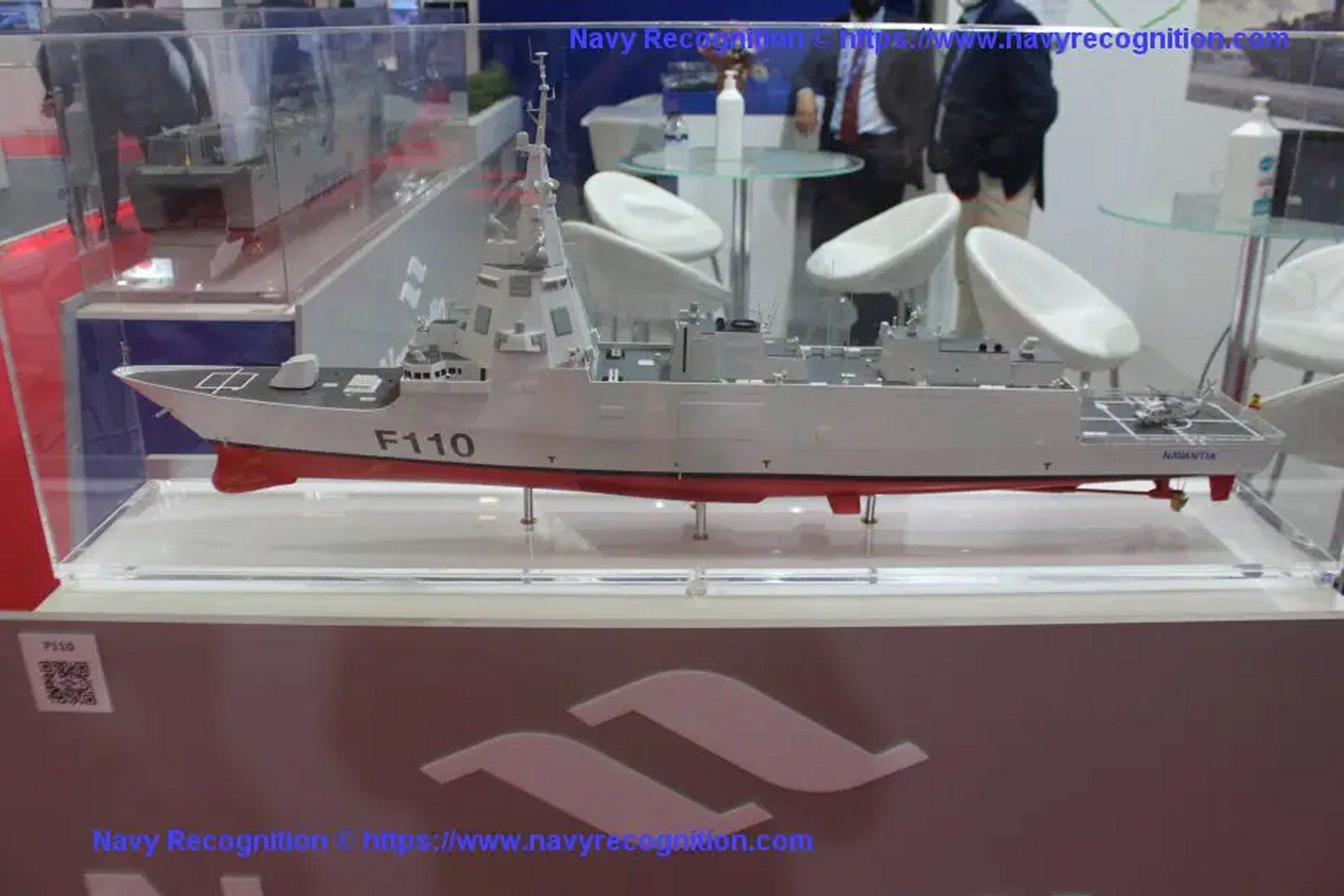Breaking News
Lockheed Martin taps Spanish firms for critical SPY-7 Radar production on F-110 frigate.
According to a PR published by Lockheed Martin on July 24, 2024, the firm has announced the awarding of key contracts to three Spanish companies for the production of components for the AN/SPY-7(V)2 radar system, slated for use on the F-110 frigate. The contracts were given to Indra, Escribano Mechanical and Engineering, and ICM.
Follow Army Recognition on Google News at this link

A model of the F-110-class frigate at IDEF 2021, in Istanbul, Turkey. (Picture source: Navy Recognition)
The F110 class frigates, also known as the Bonifaz class, are an advanced multi-mission surface combatant being developed for the Spanish Navy. These frigates are set to replace the aging F-80 Santa María class and are designed to address a wide range of conventional and asymmetric threats.
The F110 frigates are equipped with the AN/SPY-7(V)2 radar, a state-of-the-art solid-state S-band radar developed by Lockheed Martin. This radar is part of the Aegis combat system and is notable for its advanced detection and tracking capabilities, which include the ability to engage sophisticated ballistic missile and advanced air threats. The SPY-7 radar uses gallium nitride (GaN) technology, which enhances its performance by improving cooling efficiency and allowing for a more modular and upgradeable design.
The first ship, Almirante Bonifaz (F-111), is set to be launched in June 2025, with subsequent ships also progressing well in their construction timelines.
The combat system for the F110 class is a combination of Navantia's Sistema de Combate de los Buques de la Armada (SCOMBA) and the Aegis fire control loop. This integration is facilitated at the Aegis-SCOMBA Integration Center (ASIC) in Moorestown, New Jersey, where comprehensive testing and validation are conducted to ensure system readiness and compatibility.
The F110 class will also feature an array of advanced weaponry and sensor systems. These include Leonardo's 127/64 LW main gun, Raytheon's Evolved SeaSparrow Missile (ESSM) Block 2, Kongsberg's Naval Strike Missile, and Thales' underwater sensor suite.


























